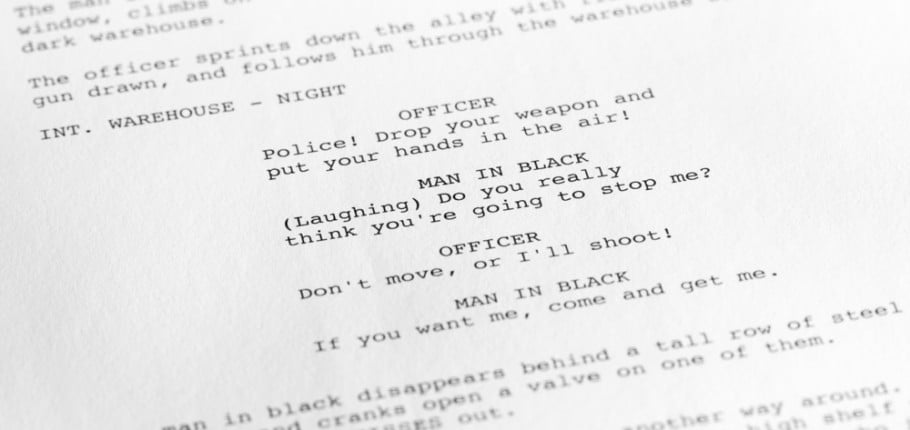
Screenwriting 101: The Antagonist
We love villains.
Before superhero movies were all about the good guys attacking each other, the primary concern was always which iconic bad guy would be stirring up trouble. That Joker card at the end of Batman Begins got thunderclaps of audience applause. The kids at my high school were jumping up and down to see Venom in Spider-Man 3. I loudly complained that Tim Story’s Fantastic Four adaptation screwed up Doctor Doom ten years before Josh Trank’s version did the same thing.
It’s important to note that most cinematic villains don’t have costumes. They are simply antagonists – characters whose goals come into direct conflict with the protagonists’ goals. That’s it. Sometimes, you get Hannibal Lecter – an Academy Award winning powerhouse that spawned a multimedia franchise. Other times, it’s just a loving parent trying to force her daughter to donate her kidney to her sister (shout-out to My Sister’s Keeper!).
Here are a few simple things to keep in mind while you create your own antagonist.
KNOW THE DIFFERENCE
Every now and then, some knucklehead brags that their script pushes boundaries because in their story, the antagonist is the *protagonist*! Yeah, that’s nice. Have a cookie.
Look, it doesn’t matter if your screenplay is about a mad scientist unleashing a deadly virus that will kill every man, woman and child on this green planet. If Professor Chaos is driving the action forward – if his wants and needs shape the narrative – then he is the protagonist. The heroic character trying to stop him – Mint-Berry Crunch or Mysterion or whatever – is the antagonist.
Centering a film on a villainous protagonist goes all the way back to 1930s gangster pictures. There are probably boatloads of literary precedents as well, but this ain’t the Book Connection. Basically, your audience has seen everything from Breaking Bad to Despicable Me. Don’t become over-enamored of your twist.
MAKE ‘EM MEMORABLE
A few years ago, Quentin Tarantino decided to make a WWII film. Suddenly, he had access to quite possibly the worst villains in history: the Nazis. No one likes Nazis for reasons that I shouldn’t have to articulate. The audience immediately recognizes them as figures of unimaginable evil that need to be stopped at all costs.
But that wasn’t enough for Tarantino. He created Colonel Hans Landa, a genius hunter who can gleefully speak multiple languages as he leads innocents to the slaughter. Whether he’s chatting with a nervous farmer across a table or greeting undercover operatives at a party, he’s always a serpent hiding in the grass –a killer with a smile. Actor Christoph Waltz’s star-making charisma plays a huge role, but the writing crafted a part to die for.
Here’s the thing: No one in their right mind wants Landa to win. We want the heroes to pound him into dust. But if you can make your antagonist compelling and dynamic, your audience is going to love to hate him. And that’s the kind of affection that leads to Best Supporting Actor Oscars.
FIND THE NUANCE
Dudes don’t think they’re evil dudes. Everyone has a motivation – a justification for their actions. Kids TV shows can get away with Rita Repulsa or Shredder sending monsters to kill the cursed heroes because they’re plain old rotten to the core. But in a feature film, there has to be more under the surface.
Let’s look at the Thor movies. Thor: The Dark World is about a dark elf trying to capture some kind of space gas so he can he blow up the universe or whatever. Those kinds of plans are always crummy – it’s basically a whiny grand-scale suicide plot. But the movie has so many characters and so many plot mechanics that the villain’s ostensible motivations get lost in the noise. At the end of the day, he’s just the generic bad guy who makes the story happen.
Now let’s compare that to the first Thor. The God of Thunder’s brother Loki is the antagonist. He’s always felt like an overlooked son, and when he discovers that he was adopted, he rejects his family entirely. You can argue that Loki is just immature, but the film depicts his journey and makes us understand his anguish. He’s lashing out, and we understand why. This creates more audience investment – we care about Loki and hope he sees the light.
Loki’s been in three movies and counting. I guarantee you that we will never see that dark elf guy again. Therefore: write a Loki.
STACK THE DECK
People argue a lot about what’s the better movie: Terminator or Terminator 2. Both sides can make fair points, but here’s the correct answer: Terminator. Terminator 2 features the T-1000 as the antagonist – one of the most formidable threats in the history of cinema. BUT he’s going up against Arnold Schwarzenegger – one of the most undefeatable heroes in the history of cinema. It’s a pretty big deal, but it’s not overwhelming.
Now let’s look at Terminator. Arnold Schwarzenegger – a star who wins in nearly every one of his movies – is the antagonist. He’s an unstoppable robot who exists only to kill. He will never stop. He cannot be stopped. And who’s he up against? Two ordinary humans. Michael Biehn and Linda Hamilton are very photogenic, but put them up against Arnold freakin’ Schwarzenegger and they look like vulnerable children. I instinctually know that Arnold can handle whatever Robert Patrick can throw at him, but when I see battered, bloody Linda Hamilton limping away from a soulless cyborg, my heart races. That’s the danger that you need to capture.
Look at it this way: if you’re making a Super Mario Bros. movie, you’re not going to have a Goomba be the Big Bad. One jump, and he’s dead. You need Bowser, King of the Koopas – a giant fire-breathing turtle with spikes on his shell. You need a serious threat that your protagonist is going to struggle to overcome.
This applies to non-action movies as well. Nurse Ratched is a big deal in One Flew over the Cuckoo’s Nest because she is so cold and unemotional. She’s a rigid authority figure who won’t bow to Randle McMurphy’s demands. The tug-of-war between actors Louise Fletcher and Jack Nicholson is just as captivating as Freddy vs. Jason, Alien vs. Predator or Kramer vs. Kramer.
GO BIZARRO
If you’re really struggling to create an antagonist, look at your protagonist and flip the script. Every single high school movie about an unpopular kid has the popular teen as the rival. Poor people go up against rich people. The slobs fight the snobs. Vampires battle werewolves. Find that insurmountable difference and actualize it.
If all else fails, just have your hero battle a force of nature. You know, like a shark or a tornado or… or… a tornado-shark.
How to Write Screenplay Characters That Keep Your Audience Interested: The Protagonist



